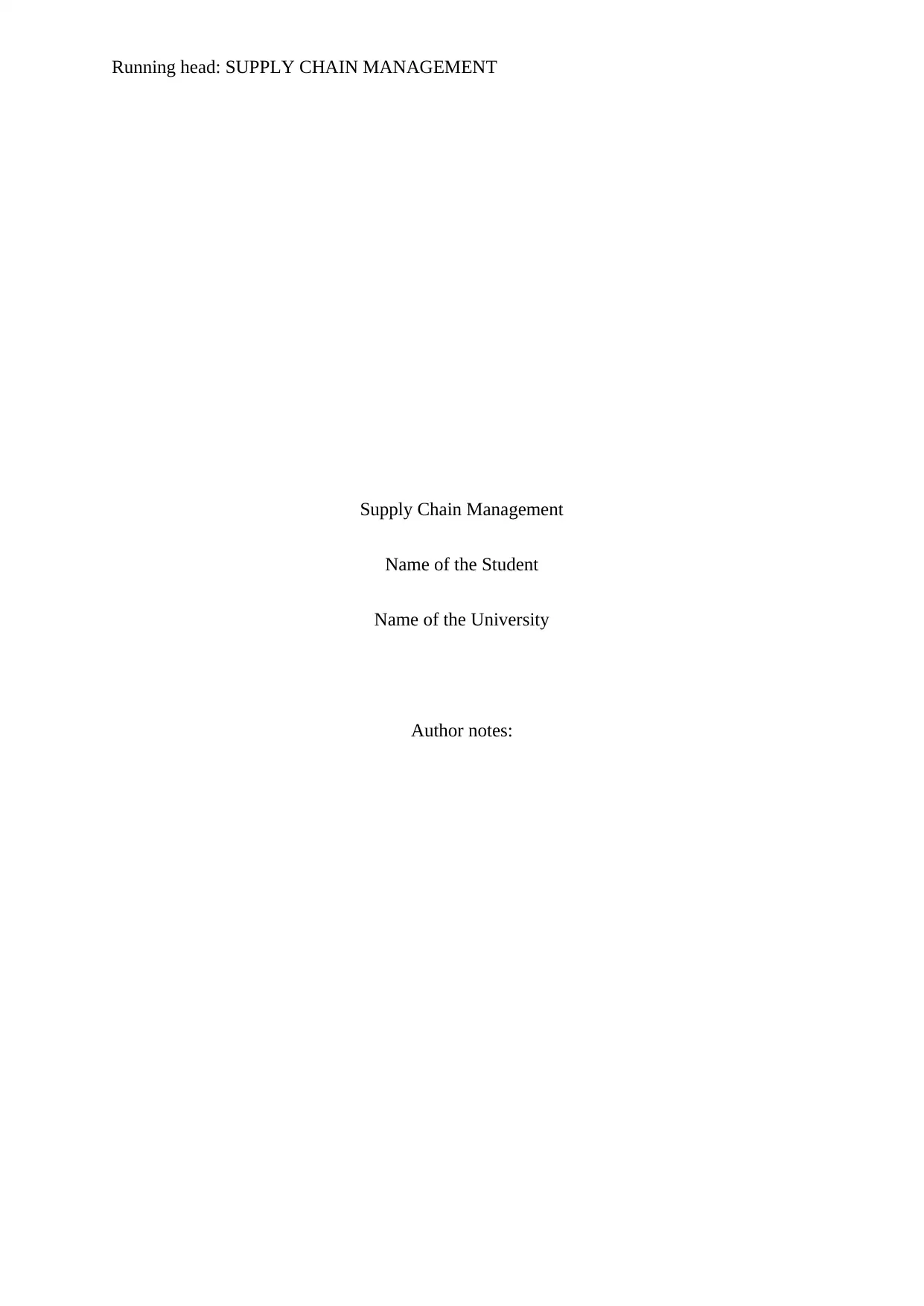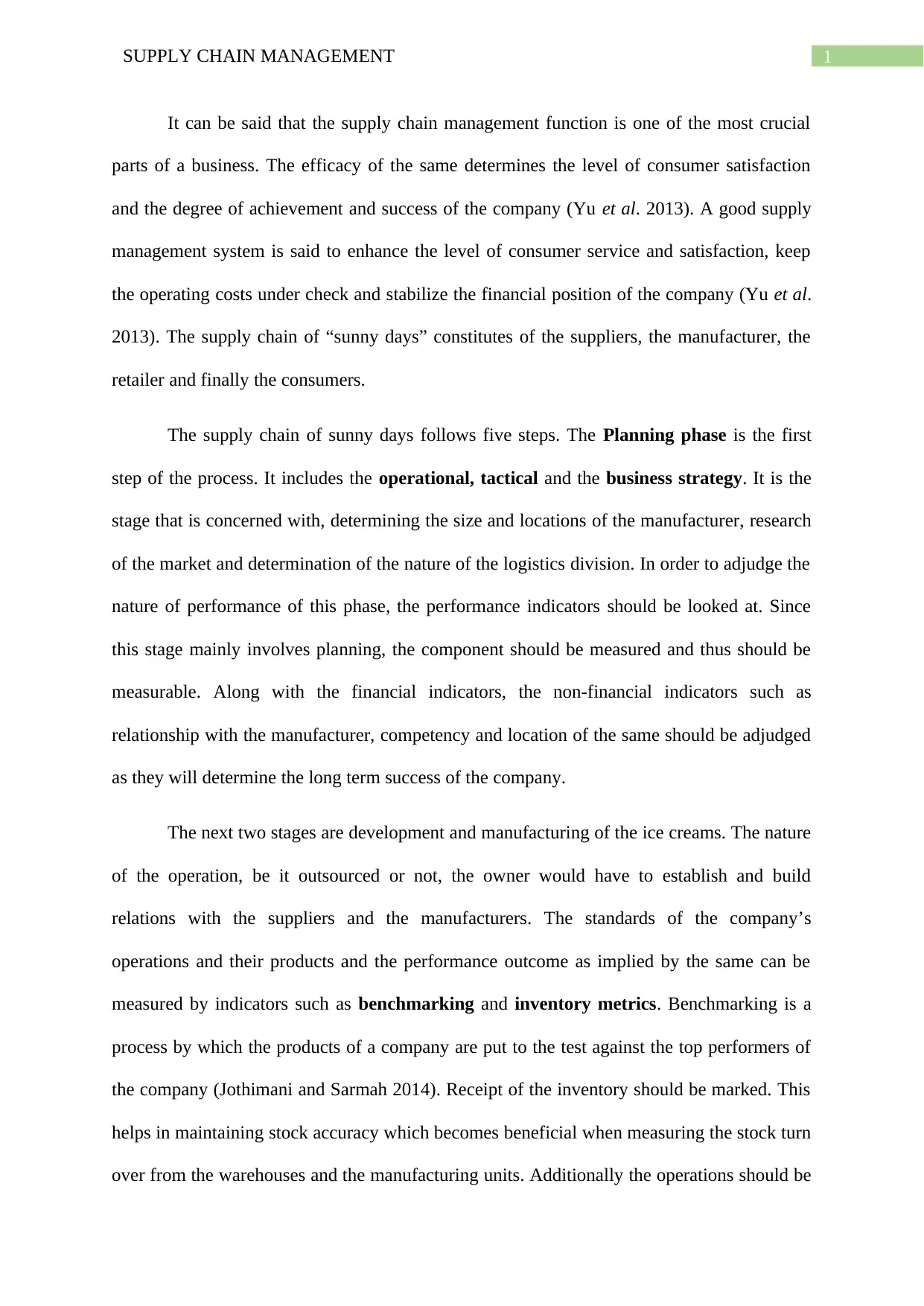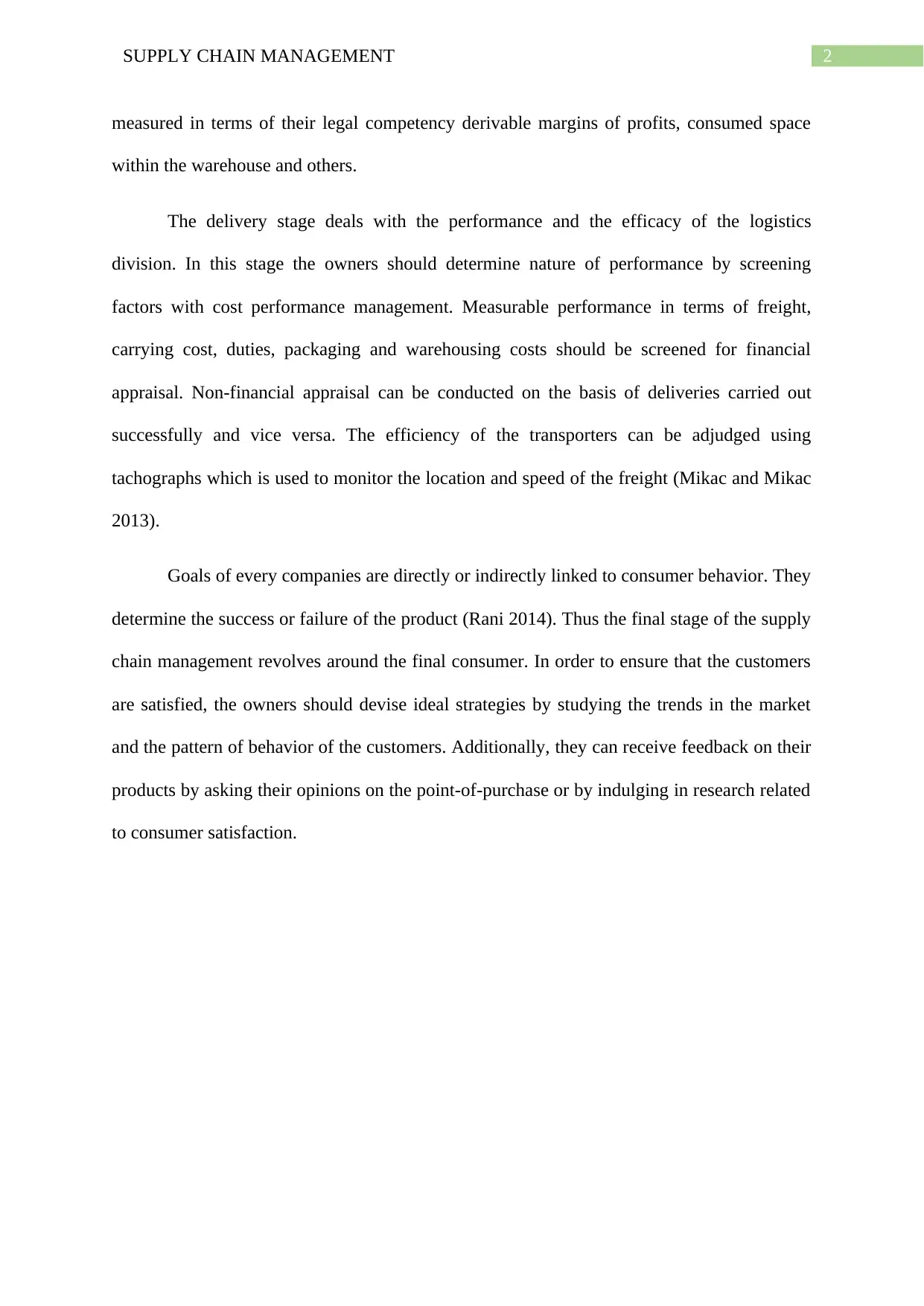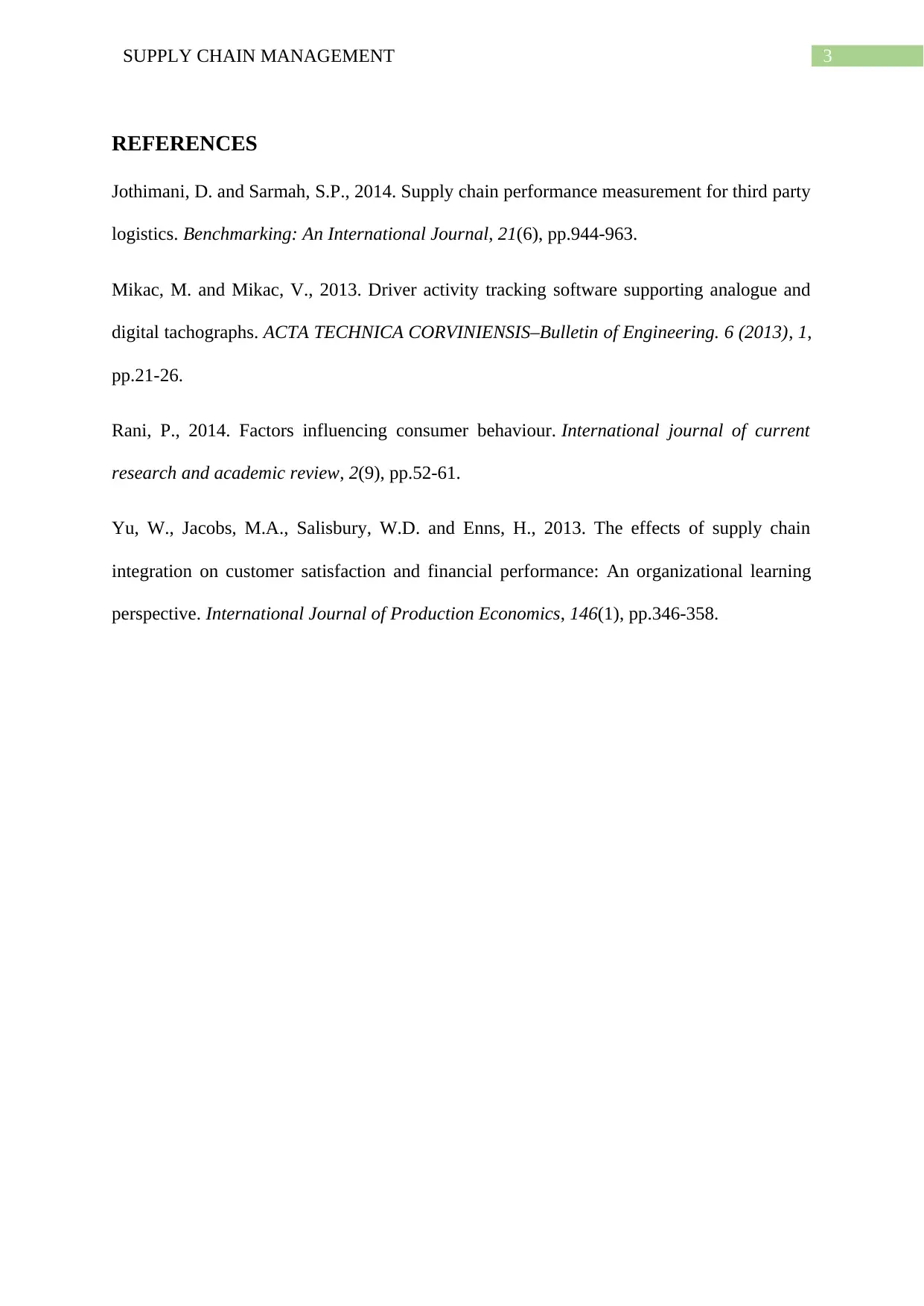Logistics and Supply Chain Management Report: Sunny Days Analysis
VerifiedAdded on 2023/04/21
|4
|789
|393
Report
AI Summary
This report analyzes the supply chain management of 'Sunny Days,' a hypothetical company. The report outlines the five key stages of the supply chain: planning, development, manufacturing, delivery, and consumer behavior. The planning phase involves strategic decisions such as determining the size and location of manufacturing facilities and market research. The development and manufacturing stages focus on building relationships with suppliers and manufacturers, with performance measured by benchmarking and inventory metrics. The delivery stage assesses the efficiency of the logistics division, considering financial and non-financial performance indicators. The final stage emphasizes consumer satisfaction, highlighting the importance of understanding market trends and customer behavior through feedback and research. The report also references key academic papers and provides valuable insights into supply chain optimization.
1 out of 4











![[object Object]](/_next/static/media/star-bottom.7253800d.svg)